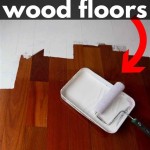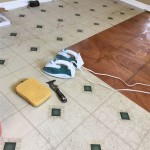Can You Lay Tile on Cement Floor: A Comprehensive Guide
Laying tile on a cement floor is a common and effective way to enhance the aesthetic appeal and functionality of a space. Cement, or concrete, floors offer a stable and durable substrate that, when properly prepared, can provide an excellent surface for tile installation. However, ensuring a successful and long-lasting tile installation involves careful planning, correct surface preparation, and the appropriate use of materials and techniques. This article provides a comprehensive overview of the process, highlighting essential steps and considerations for laying tile on cement floors.
Assessing the Cement Floor's Condition
Before embarking on any tiling project, a thorough assessment of the existing cement floor is paramount. This evaluation determines the floor's suitability for tile installation and identifies any potential issues that need to be addressed. Several critical factors should be considered during this assessment.
First, inspect the floor for cracks. Minor hairline cracks, often referred to as shrinkage cracks, are common in cement floors and may not pose a significant problem. However, larger cracks, particularly those wider than 1/8 inch or demonstrating evidence of movement (differential settling), require immediate attention. These types of cracks can propagate through the tile installation, leading to unsightly and potentially hazardous damage. Addressing these cracks may involve crack isolation membranes or professional structural repairs.
Next, evaluate the floor's levelness. A level surface is crucial for ensuring a flat and uniform tile installation. Use a long level (at least 6 feet) to check for any significant dips or humps. Minor imperfections can often be corrected with self-leveling compounds, but more substantial variations may necessitate grinding or other leveling techniques.
The floor's porosity also plays a role in tile adhesion. Cement floors can sometimes be too dense or sealed, hindering the proper bonding of the thin-set mortar. Conversely, excessively porous floors can absorb moisture from the mortar too quickly, weakening the bond. A simple water test can help determine the floor's porosity. Pour a small amount of water onto the floor and observe how quickly it is absorbed. If the water beads up or sits on the surface for an extended period, the floor may need to be etched or mechanically abraded to improve porosity. If the water is absorbed almost immediately, the floor may benefit from a primer to control the absorption rate.
Finally, check for any existing coatings, sealers, or adhesives. These materials can interfere with the bond between the thin-set mortar and the cement floor. Remove any contaminants thoroughly using appropriate solvents or mechanical methods, such as grinding or scraping. Ensure the floor is clean, dry, and free from any debris before proceeding.
Preparing the Cement Floor for Tiling
Once the cement floor's condition has been assessed and any necessary repairs have been made, the next crucial step is preparing the surface for tiling. Proper preparation ensures optimal adhesion and a long-lasting, professional-looking result. This preparation typically involves cleaning, leveling, and priming.
Begin by thoroughly cleaning the cement floor. Sweep away any loose debris, dust, and dirt. Then, use a wet/dry vacuum to remove any remaining fine particles. For stubborn stains or residues, scrub the floor with a suitable cleaning solution, such as a mild detergent or TSP (trisodium phosphate), followed by a thorough rinse with clean water. Allow the floor to dry completely before proceeding.
If the floor is not level, a self-leveling compound may be necessary. Self-leveling compounds are cement-based mixtures that can be poured onto the floor to create a smooth, even surface. Before applying the self-leveling compound, prime the floor with a bonding agent to promote adhesion. Follow the manufacturer's instructions carefully for mixing and application. Allow the self-leveling compound to cure completely before tiling.
Priming the cement floor is an essential step that enhances the bond between the thin-set mortar and the substrate. Primers typically consist of acrylic or latex-based formulations that penetrate the concrete, creating a more receptive surface for adhesion. Choose a primer that is specifically designed for use with tile and thin-set mortar. Apply the primer according to the manufacturer's instructions, ensuring an even and complete coating. Allow the primer to dry thoroughly before proceeding.
In some cases, a crack isolation membrane may be recommended, especially if the cement floor has a history of cracking or movement. Crack isolation membranes are thin, flexible sheets that are installed over the cement floor before tiling. These membranes act as a barrier, preventing cracks in the substrate from transferring to the tile installation. Follow the manufacturer's instructions for installing the crack isolation membrane, ensuring proper overlap and adhesion.
Selecting the Right Materials and Tools
Choosing the appropriate materials and tools is essential for a successful tile installation on a cement floor. The quality of the materials directly impacts the durability, longevity, and aesthetic appeal of the finished project. The right tools ensure efficient and accurate installation.
The tile itself should be selected based on its intended use, aesthetic preferences, and compatibility with the cement floor. Consider factors such as the tile's material (ceramic, porcelain, stone, etc.), size, shape, and finish. Porcelain tiles are generally more durable and resistant to water absorption than ceramic tiles, making them a good choice for high-traffic areas or areas prone to moisture. Natural stone tiles require specific installation techniques and sealing to prevent staining and damage.
The thin-set mortar is the adhesive that bonds the tile to the cement floor. Choose a thin-set mortar that is specifically designed for use with the type of tile you have selected and the substrate (cement). Modified thin-set mortars contain polymers that enhance adhesion, flexibility, and water resistance. Consider using a rapid-setting thin-set mortar for faster installation or in areas where quick turnaround is needed.
Grout fills the spaces between the tiles and provides a waterproof seal. Select a grout that is appropriate for the tile type and the intended use of the area. Cement-based grouts are commonly used for most tile installations, while epoxy grouts offer superior stain resistance and durability, making them ideal for kitchens and bathrooms. Choose a grout color that complements the tile and the overall design.
Essential tools for laying tile on a cement floor include a notched trowel (size determined by the tile size), a tile cutter (wet saw or snap cutter), a rubber mallet, a grout float, a sponge, a level, measuring tape, a pencil, and safety glasses. A mixing bucket and a drill with a mixing paddle are needed for preparing the thin-set mortar and grout. Ensure all tools are clean and in good working condition before starting the project.
In addition to these essential materials, consider using spacers to maintain consistent grout lines between the tiles. Spacers come in various sizes and shapes to accommodate different tile sizes and design preferences. Using spacers helps ensure a uniform and professional-looking installation.
The Tile Installation Process
With the cement floor properly prepared and the necessary materials and tools assembled, the tile installation process can begin. This process requires careful attention to detail and adherence to best practices to ensure a successful and long-lasting result.
Begin by dry-laying the tiles to plan the layout and identify any potential issues. Start in the center of the room and work outwards, ensuring that the first row of tiles is straight and aligned. Use a level to verify that the tiles are flat and even. This stage allows for adjustments and corrections before applying the thin-set mortar.
Once the layout is satisfactory, mix the thin-set mortar according to the manufacturer's instructions. Use a drill with a mixing paddle to create a smooth, consistent mixture. Avoid adding too much water, as this can weaken the bond. Let the mortar slake (rest) for the recommended time before using.
Apply the thin-set mortar to the cement floor using the notched trowel. Hold the trowel at a 45-degree angle and create ridges in the mortar. The size of the notches on the trowel should correspond to the size of the tiles being installed. Apply enough mortar to cover a small area, typically 2-3 square feet at a time. Avoid applying too much mortar, as this can make it difficult to set the tiles properly.
Place the tiles onto the mortar bed, pressing them firmly into place. Use a slight twisting motion to ensure good contact between the tile and the mortar. Insert spacers between the tiles to maintain consistent grout lines. Use a rubber mallet to gently tap the tiles and ensure they are level with adjacent tiles.
Continue laying tiles, working in small sections at a time. Periodically check the tiles with a level to ensure they are flat and even. Remove any excess mortar from the tile surfaces with a damp sponge. Allow the thin-set mortar to cure completely, following the manufacturer's instructions, before proceeding to the next step.
Grouting and Sealing the Tile Installation
After the thin-set mortar has cured, the next step is to grout the tile installation. Grouting fills the spaces between the tiles, providing a waterproof seal and enhancing the aesthetic appeal of the floor. Once the grout has cured, sealing the grout lines is recommended to protect them from staining and water damage.
Remove the tile spacers before grouting. Mix the grout according to the manufacturer's instructions. Use a grout float to apply the grout to the tile surface, pressing it firmly into the grout lines. Hold the float at a 45-degree angle and work in a diagonal direction to ensure complete filling of the grout lines.
Remove excess grout from the tile surface with the grout float. Then, use a damp sponge to clean the tile surface, rinsing the sponge frequently in clean water. Be careful not to remove too much grout from the grout lines. Allow the grout to set for the recommended time.
Once the grout has set, clean the tile surface with a clean, damp sponge. Use a gentle circular motion to remove any remaining grout haze. Repeat this process several times until the tile surface is clean and clear.
After the grout has cured completely, typically after 72 hours, apply a grout sealer to protect the grout lines from staining and water damage. Apply the sealer according to the manufacturer's instructions, using a brush or applicator. Allow the sealer to dry completely before using the floor.
Once the grout sealer has dried, the tile installation is complete. Inspect the floor for any imperfections and make any necessary touch-ups. Clean the floor thoroughly with a mild detergent and water. The newly tiled floor is now ready for use.
:max_bytes(150000):strip_icc()/can-you-install-tile-directly-on-concrete-1822600-04-458f7bb6c78348c1835cf8054ef36553.jpg?strip=all)
How To Install Tile Over Concrete
How To Tile Onto Concrete Floors Porcelain Super

Tiling Over A Ed Concrete Slab Fine Homebuilding
How To Lay Floor Tiles On Concrete Stonesuper

How To Lay Floor Tiles On Concrete Welcome The Rubi Tools Blog
When Cementing Tile Why Do People Add Rows To The Cement Instead Of Just Leaving It Smooth Quora

Can You Lay Tiles Onto Damp Concrete Atlas Ceramics

How To Install Ceramic Tiles On Concrete Floor Tile Installation

Materials Needed To Lay Tile Floor The Best Tools Rubi Blog Usa
:max_bytes(150000):strip_icc()/can-you-install-tile-directly-on-concrete-1822600-01-8a89ceab1a274fb8ac81890ab7fc6b1b.jpg?strip=all)
How To Install Tile Over Concrete
See Also







